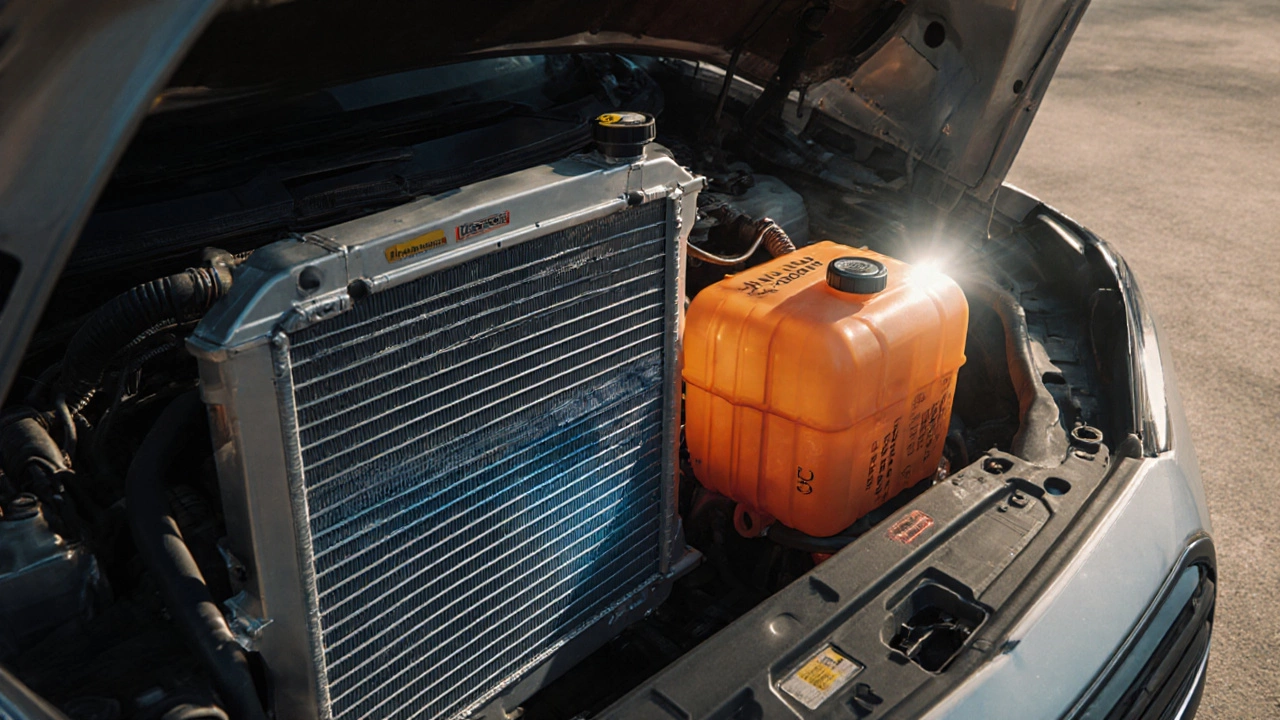Radiator Inspection: How to Spot Problems Before Your Engine Overheats
When your car’s radiator, a critical part of the engine cooling system that transfers heat from coolant to the air. Also known as a cooling radiator, it keeps your engine running at the right temperature. Without it, even a short drive can turn into a costly repair. Most people don’t think about it until the temperature gauge spikes or steam starts rolling out from under the hood. But a proper radiator inspection can stop that before it happens.
A radiator doesn’t just sit there—it works constantly, cycling hot coolant through thin metal tubes and fins. Over time, rust, debris, and old coolant can clog those passages. You might not see it, but inside, the flow slows down. That’s when your engine starts running hotter than it should. Signs like coolant leaks under the car, a sweet smell from the engine bay, or bubbles in the overflow tank aren’t just annoyances—they’re red flags. A failing radiator, a metal or plastic component designed to dissipate engine heat using airflow and coolant circulation. can cause your engine cooling, the system that regulates engine temperature using coolant, water pump, thermostat, and radiator. to collapse. And once the engine overheats, you’re looking at warped heads, blown gaskets, or worse.
Most radiator issues start small. A tiny crack in the plastic end tank. A loose hose clamp. A corroded radiator cap that can’t hold pressure. These aren’t hard to catch if you know what to look for. A quick visual check every few months—looking under the car for puddles, checking the coolant level when the engine is cold, and inspecting the hoses for swelling or cracks—can save you thousands. You don’t need fancy tools. Just a flashlight, gloves, and five minutes. And if you notice your car overheating in traffic or the heater blowing cold air while the engine is hot, that’s your radiator screaming for attention.
Modern cars still rely on radiators—even electric ones need cooling for their batteries and power electronics. But the rules haven’t changed: dirty coolant, neglected inspections, and ignoring warning signs lead to failure. The posts below give you real, no-fluff guidance on spotting radiator problems before they turn into roadside breakdowns. You’ll find step-by-step checks for leaks, signs your radiator’s done for, how long they actually last, and what to do when your car starts running hot. No theory. No guesswork. Just what works on UK roads.

How to Check Your Radiators - Simple Steps for Car Owners
Learn how to inspect your car's radiator with a simple step‑by‑step guide, tools list, common issues, and troubleshooting tips to avoid overheating.
October 9 2025